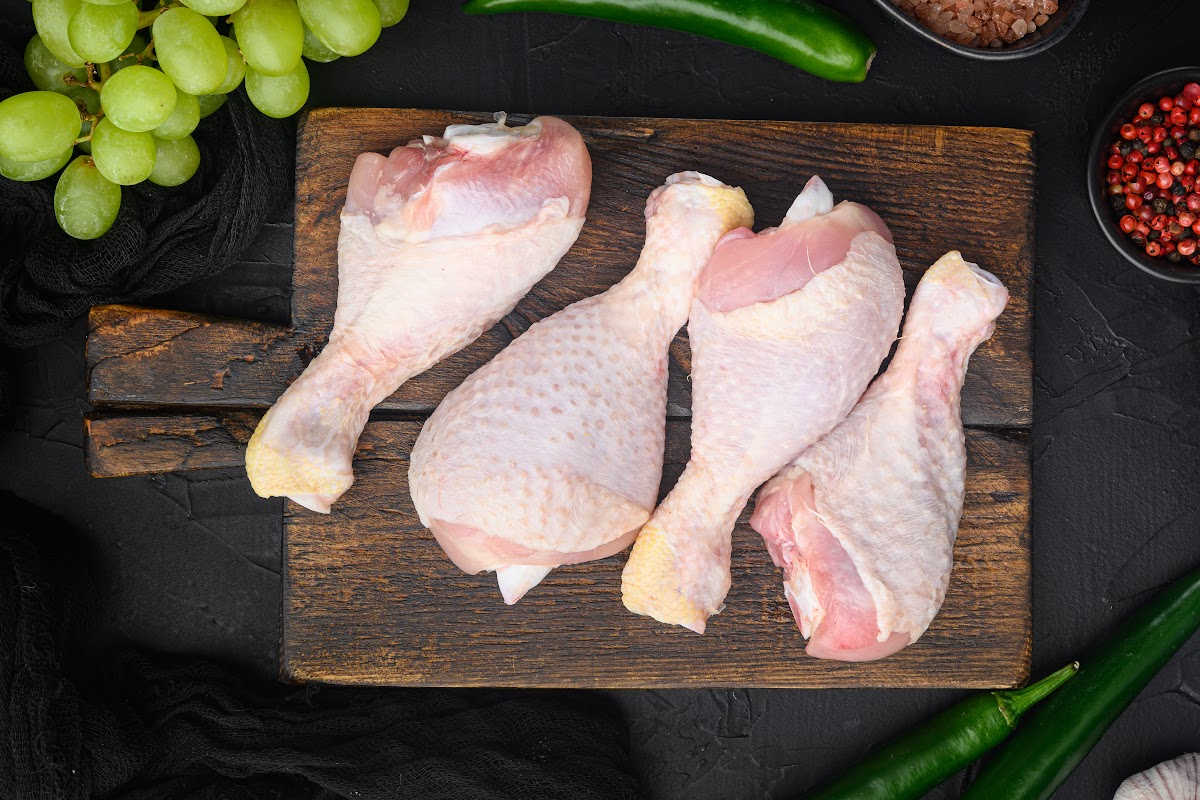You spend the entire day preparing and cooking the turkey. You may end up ready to serve hours before feast time and guests arrive. So, you’re left wondering how to keep a turkey warm.
Thanksgiving dinner is a staple in almost every household. Usually, the star of that dinner is a warm, juicy turkey that we are all craving. You’ve spent the whole month making plans for the meal, figuring out how big of a turkey to cook and how long to cook it, and making sure your guests will have fun and the table looks great.
There are many ways to maintain the temperature of a turkey for a while. Let’s take a look at how to keep your turkey toasty and the factors that affect the process.
Cooking the perfect juicy and flavorful turkey is one of the best parts of Thanksgiving or any big gathering. But keeping it piping hot and moist after cooking can be tricky. You want to avoid serving dried out, cold turkey while also following food safety rules.
In this comprehensive guide, we’ll go over the ideal timelines and best practices for keeping your turkey safe and warm after cooking without ruining texture or taste.
Proper Cook Times are Essential
To keep turkey warm after cooking, you first need to make sure it’s cooked properly. According to the USDA an unstuffed turkey should cook at 325°F for about 15 minutes per pound. A spatchcocked turkey takes less time at around 9-10 minutes per pound at 450°F.
Always use a meat thermometer to check doneness instead of just relying on cook times, Turkey is safe to eat once it reaches an internal temperature of 165°F in the thickest part of the thigh
Undercooked turkey can have dangerous bacteria while overcooked meat will be dry. Hitting the right internal temperature is critical.
Follow the 2 Hour Rule
The USDA warns against leaving cooked turkey or other perishable foods out for more than 2 hours at room temperature. Bacteria grows rapidly between 40-140°F.
After cooking let the turkey rest for 20 minutes before carving or warming so juices can redistribute.
If the turkey won’t be served within 2 hours of finishing cook time, you need to take steps to keep it safe and warm.
Keeping the Turkey Whole vs. Carved
You have two options for keeping cooked turkey warm: leaving it whole or carving it first.
For turkey served within 2 hours of cooking, keep it whole and cover it with foil. Carving right away allows juices to escape and meat to dry out.
If turkey is done more than 2 hours before eating, carve into slices first then refrigerate until ready to reheat and serve. Place slices together on a tray and wrap well before chilling.
5 Simple Ways to Keep Turkey Warm
Here are easy, foolproof methods for keeping your holiday bird hot after cooking:
-
Cover with foil and a towel – Rest turkey 20 minutes after cooking. Then cover tightly with heavy duty foil and place a clean kitchen towel on top to retain heat. Keeps turkey warm for 1-2 hours.
-
Keep turkey in a warm oven – After resting, cover turkey in foil and place in a low temp (200-225°F) oven. Add a pan of warm water for moisture. Keeps turkey hot for 2-3 hours.
-
Use a crockpot – Transfer roasted turkey to a crockpot, add juices, and keep on low or warm setting for up to 4 hours.
-
Reheat in broth – Carve turkey and refrigerate until ready to reheat. Add warm turkey or chicken broth before reheating to keep meat juicy.
-
Hold in a chafing dish – Carved turkey can be kept hot in a chafing dish for up to 4 hours. Maintain a safe serving temperature of 140°F or higher.
Safety First When Reheating
If reheating previously cooked and refrigerated turkey, use a meat thermometer to confirm it reaches 165°F throughout before serving.
Bring sauces, soups, sides, and other dishes to a full rolling boil when reheating as well to eliminate bacteria.
Don’t keep reheated turkey or other foods warm for longer than 2 hours total. Refrigerate or freeze leftovers after serving.
Moisture is Key for Texture
To prevent your turkey from drying out after initial roasting, moisture is vital. Use broth, gravy, or a water pan when reheating to impart steam and keep meat juicy.
Basting the turkey with pan drippings during roasting helps ensure tender, flavorful meat all the way to the bone.
When carving cooked turkey in advance, cut slices 3/4 inch thick so they retain moisture better during storage.
Master the Balancing Act
With proper food safety practices, resting times, and the right warming techniques, you can keep your holiday turkey piping hot and delicious for hours after cooking.
The keys are preventing bacterial growth by following the 2 hour rule, maintaining safe serving temperatures, and keeping the meat moist.
Master these tips and you’ll never have to serve dried out, lukewarm turkey again!
Frequently Asked Questions
How long can you keep a cooked turkey warm after cooking?
You can safely keep a cooked turkey warm for 2-4 hours depending on the method. Covering with foil keeps it warm about 1-2 hours. Using a warm oven, crockpot or chafing dish extends safe warming time to 2-4 hours.
What is the best way to keep turkey warm for a long time?
The best way to keep cooked turkey piping hot for an extended time is to use an oven, crockpot, or chafing dish to gently reheat the meat. Maintain temperatures above 140°F. Adding broth or gravy provides moisture.
Can you keep turkey warm overnight?
It is unsafe to keep turkey or any cooked meat warm overnight at room temperature or even in a slow cooker or oven. Bacteria grows rapidly above 40°F. Refrigerate or freeze all leftovers within 2 hours.
Should you tent turkey with foil to keep warm?
Yes, tenting cooked turkey with a double layer of foil is an effective way to trap heat and moisture. Let the turkey rest 20 minutes after cooking, then cover it tightly with foil. For extra insulation, add a clean towel on top.
How long does turkey stay warm after being cooked?
A whole roasted turkey will typically stay warm for 1-2 hours after cooking if properly covered in foil and towels. Carved turkey cools more quickly. All poultry should be refrigerated or reheated within 2 hours after cooking.
Mastering the safe handling, storage and reheating guidelines along with the right warming techniques allows you to keep cooked turkey delicious for hours after preparation. With a meat thermometer and moisture, you’ll never have to worry about serving dry, cold holiday turkey again.

Factors That Affect How Long a Turkey Stays Warm
There are so many variables to take into account when cooking a turkey and keeping it warm.
Before Thanksgiving, one of the biggest debates is what size turkey to buy. Naturally, you want one that’s big enough to feed everyone. However, larger turkeys take a lot longer to cook all the way through.
The size of the turkey can also affect how well it can hold on to temperature. The longer your turkey takes to cook, the longer it will stay warm afterwards.
This is because the bird spends more time accumulating heat at its center. Once you stop cooking, the residual heat can keep the turkey warm for hours.

Traditionally, when you cook a turkey, you cook it whole. This allows you to trap the juices inside the bird to keep it as moist as possible.
However, cooking the entire bird at once may be too much of a hassle. For this reason, people opt to cook turkey thighs or breasts separately.
Cooking pieces cuts down on cooking time significantly, but it also means your turkey will cool down faster.
The cooked turkey won’t be able to keep its temperature for as long without some help because there is less residual heat.
️ Perfect Turkey Temperature

There are many debates about how you should cook your turkey. Some people like to deep fry the bird, while others like to grill or smoke it.
However, the most common method is low-and-slow baking. Now is the time to cook your turkey for several hours in an oven set to 325°F to 350°F.
The reason why this method is so popular is that it produces a moist, perfectly cooked turkey.
Even though we cook the turkey at 350°F, we don’t expect it to reach that internal temperature.
You want your turkey breast to hit 170°F and the thighs to reach 180°F. Anything higher than that can cause the meat to dry out and overcook. Check out Butterball’s temperature guide.

